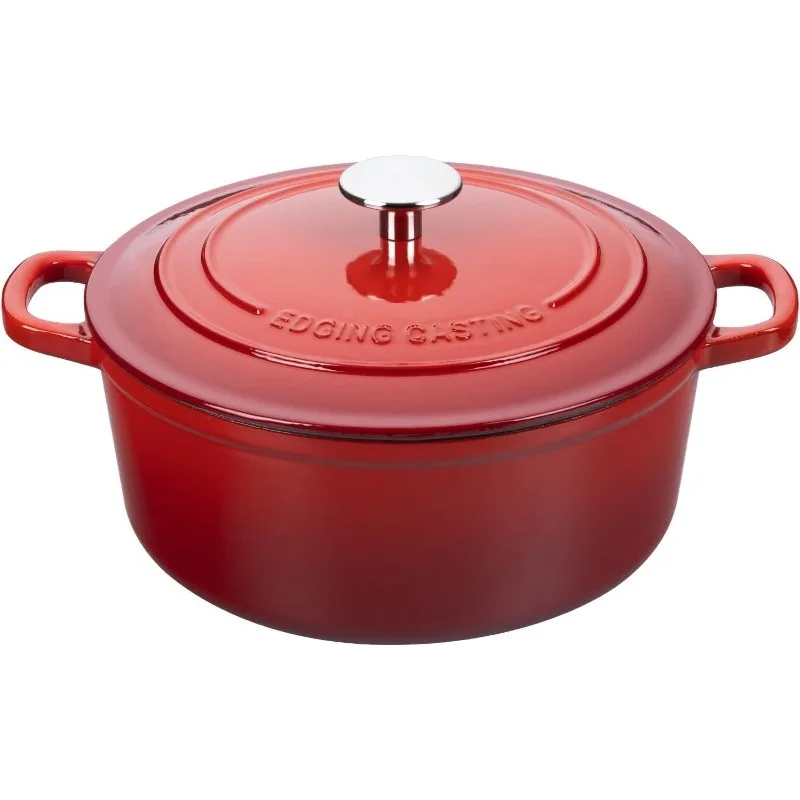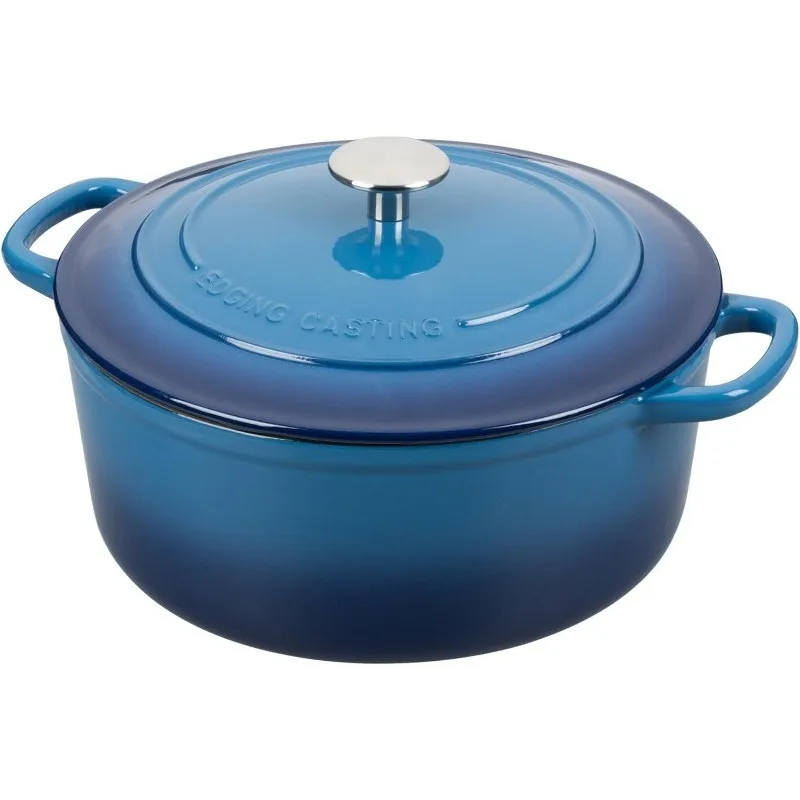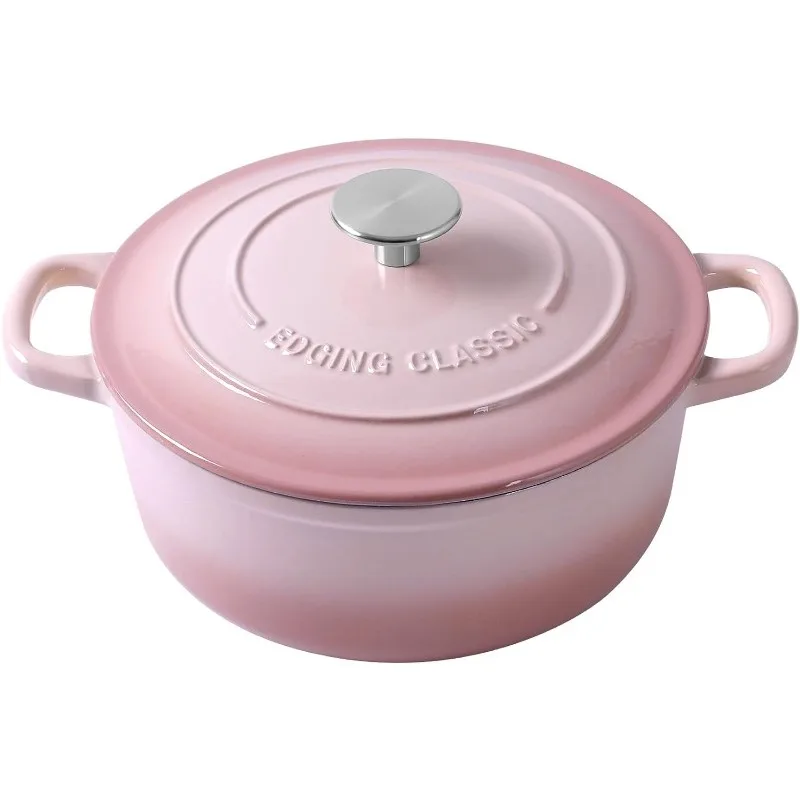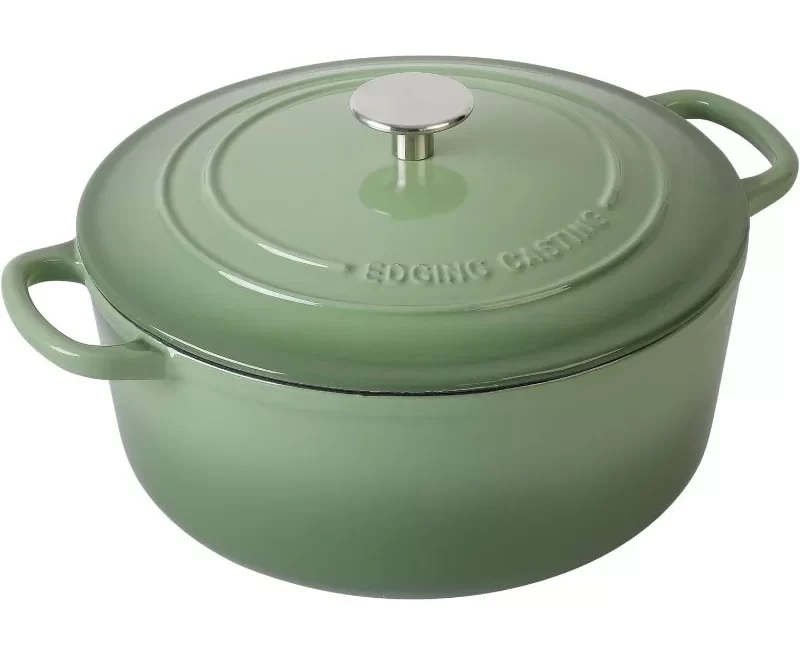Introduction
Dutch ovens are versatile kitchen tools. They cook delicious meals, from stews to bread. However, they can accumulate stains and residue over time. How to clean dutch oven? Cleaning them might seem daunting, but it’s easier than you think. In this guide, we’ll explore how to clean your Dutch oven effectively. We’ll break it down into simple steps, ensuring your cookware remains in excellent condition.

Why Clean a Dutch Oven?
The Importance of Regular Cleaning
Cleaning your Dutch oven regularly is essential. Food residue can build up over time. This buildup can lead to stubborn stains. If not cleaned properly, it can affect the taste of your food. Regular cleaning also helps maintain the pot’s appearance.
Protecting Your Investment
Dutch ovens can be costly. Taking good care of your investment benefits you in the long run. A well-maintained Dutch oven can last for generations. When you clean it properly, you extend its life. This process can save money in the future, as you won’t need to replace it as often.
The Right Tools for the Job
Gather Your Supplies
Before you begin cleaning, gather your cleaning supplies. You’ll need a few basic items:
- Soft sponge or cloth
- Baking soda
- Water
- White vinegar
- Dish soap
- Wooden or silicone spatula (for stubborn bits)
These items will help you tackle various cleaning challenges. You can find these supplies in most kitchens. If some are missing, they’re easy to purchase.
Avoid Harsh Chemicals
When it comes to cleaning your Dutch oven, avoid harsh chemicals. Using bleach or abrasive cleaners can ruin your pot. These can strip the seasoning from cast iron or scratch enamel surfaces. Stick to natural cleaning solutions that are safe and effective.

Cleaning Different Types of Dutch Ovens
Enamel-Coated Dutch Ovens
How to clean dutch oven? Enamel-coated Dutch ovens are popular for many cooks. They have a smooth surface that is easy to clean. However, they can stain, especially when cooking tomato-based dishes.
Step-by-Step Cleaning Process
- Cool Down: Allow your Dutch oven to cool completely after use. Placing a hot pot in water can cause it to crack.
- Soak: Fill the pot with warm water and a few drops of dish soap. Let it soak for about 30 minutes. This helps loosen stuck-on food.
- Scrub: Use a soft sponge to scrub the pot gently. Focus on stained areas but avoid abrasive scrubbers. They can scratch the enamel.
- Baking Soda Paste: If stains remain, make a paste using baking soda and water. Apply it directly to the stains and let it sit for 15 minutes. Scrub gently with a sponge then rinse thoroughly.
- Rinse and Dry: Rinse your Dutch oven with warm water. Dry it immediately to prevent water spots.
- Store Properly: When storing, place a paper towel or cloth inside the pot. This prevents scratches and moisture buildup.
Cast Iron Dutch Ovens
Cast iron Dutch ovens are built to last. However, they require special care. Do not use soap on them, as it can strip the seasoning.
Step-by-Step Cleaning Process
- Cool Down: Let the pot cool completely after cooking.
- Scrape Excess Food: Use a wooden or silicone spatula to scrape off food bits. Avoid metal scrubbers as they can damage the seasoning.
- Rinse with Water: Rinse your Dutch oven under hot water. Use a soft sponge to remove any remaining food particles. Do not use soap.
- Dry Completely: Dry your pot immediately with a cloth. This prevents rust from forming.
- Re-season if Necessary: If you see the seasoning is dull, apply a thin layer of vegetable oil. Place it in the oven upside down at a low temperature for about an hour. This replenishes the seasoning and protects the pot.
Non-Stick Dutch Ovens
Non-stick Dutch ovens are easy to clean, but care is still necessary. Avoid using metal utensils, as they can scratch the surface.
Step-by-Step Cleaning Process
- Cool Down: Allow the pot to cool after cooking.
- Wipe Down: Use a soft cloth or sponge to wipe out any residue. Avoid using scrubbers that can scratch.
- Dish Soap and Water: If needed, wash with warm soapy water. Rinse thoroughly afterward.
- Dry Completely: Make sure to dry thoroughly with a cloth. This prevents moisture buildup.
- Store Properly: Like other Dutch ovens, consider using a paper towel or cloth between layers to avoid scratches.
Tackling Stubborn Stains
Using Baking Soda and Vinegar
Stubborn stains can frustrate even the most seasoned cook. Luckily, baking soda and vinegar provide a natural solution.

Step-by-Step Process for Stain Removal
- Create a Paste: Mix baking soda with water to form a thick paste.
- Apply the Paste: Spread the paste over the stained area of the Dutch oven. Let it sit for at least 15 minutes.
- Spray Vinegar: Spray a little white vinegar over the paste. The fizzing reaction will help lift the stain.
- Scrub Gently: Use a soft sponge to gently scrub the area. Rinse with warm water.
- Repeat if Necessary: If stains remain, you can repeat this process until clean.
Trying Commercial Cleaners
If natural methods fail, consider using a gentle commercial cleaner designed for Dutch ovens. Always read labels and follow the manufacturer’s instructions.
Important Points to Consider
- Check if the cleaner is safe for the type of Dutch oven. Not all cleaners are suitable for enamel, cast iron, or non-stick surfaces.
- Always test on a small area first. This ensures the cleaner won’t damage your pot.
Maintaining Your Dutch Oven
Regular Maintenance Tips
Taking care of your Dutch oven doesn’t end with cleaning. Regular maintenance keeps it in top shape.
- Avoid Sudden Temperature Changes: Extreme temperature changes can crack your pot. Let it warm up gradually.
- Cook on Low to Medium Heat: High heat can damage enamel and cause food to stick. Use lower heat settings to extend the life of your pot.
- Use Appropriate Utensils: Stick to wooden, silicone, or plastic utensils to avoid scratching.
- Store with Care: Always stack your cookware carefully. Avoid nesting them directly, as they can develop scratches.
- Re-season as Needed: For cast iron Dutch ovens, regular re-seasoning preserves the non-stick surface and adds flavor to your dishes.
Love and Care Go a Long Way
Showing love for your Dutch oven pays off. By cleaning and maintaining it, you ensure many delicious meals ahead. Each time you use your pot, you invest in future meals. This care leads to flavorful and cherished cooking experiences.
Long-Term Maintenance Tips
Taking care of your Dutch oven goes beyond just cleaning it. Long-term maintenance is essential for keeping it in great shape for years to come.
Regular Seasoning Checks
If you own a cast iron Dutch oven, make it a habit to check the seasoning regularly. If you notice that food is starting to stick, it’s time to re-season. Doing this regularly prevents the need for more extensive cleaning later on. Make sure to clean the pot after each use and restore the seasoning as necessary.
Proper Storage Techniques
How you store your Dutch oven also matters. Ensure that the pot is completely dry before storing it. Place a paper towel between the lid and the pot to allow for air circulation. This will help to prevent moisture buildup, which can lead to rust. Storage should be in a cool, dry place. Avoid stacking heavy items on top of your Dutch oven to prevent any damage.
Conclusion
Cleaning your Dutch oven may seem complicated, but with the right tools and methods, it can be simple. Regular cleaning prevents stains and maintains flavor. Whether you have an enamel-coated, cast iron, or non-stick pot, following these steps ensures a well-loved kitchen companion. Remember the importance of care; your Dutch oven deserves it!
As you enjoy cooking, make cleaning a part of your routine. Your future dishes will taste even better, and your pot will look as good as new! With these tips, you are now equipped to keep your Dutch oven in perfect condition for years to come. Happy cooking!



